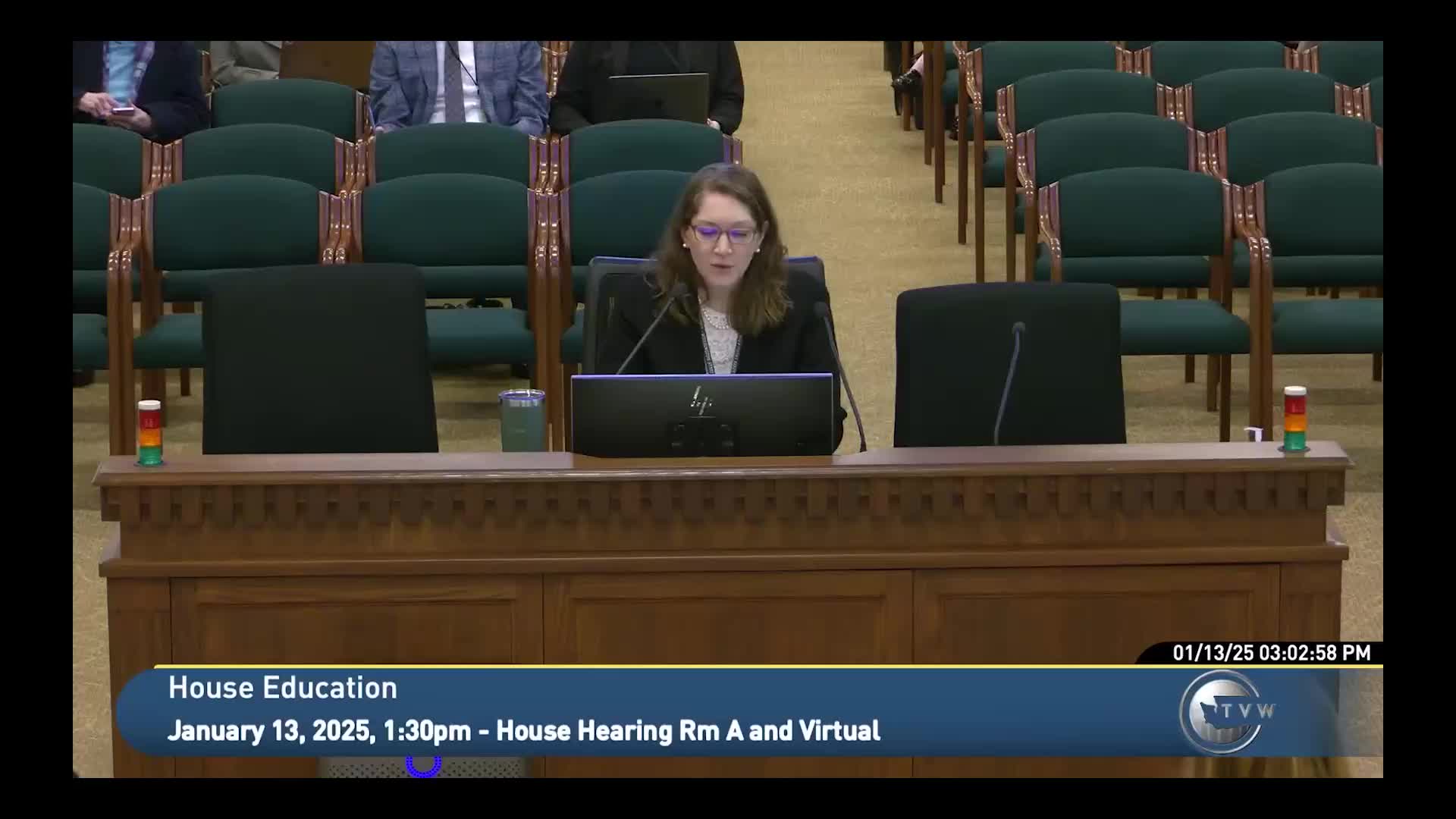Staff presents K‑12 fast facts: enrollment, student subgroups, staffing and funding snapshots
January 13, 2025 | Education, House of Representatives, Legislative Sessions, Washington
This article was created by AI summarizing key points discussed. AI makes mistakes, so for full details and context, please refer to the video of the full meeting. Please report any errors so we can fix them. Report an error »

Committee staff presented a set of "fast facts" about the K‑12 system, giving members a concise data snapshot of student enrollment, student subgroup counts, staff composition, school counts and funding shares drawn from state reporting.
Megan Worgachie and staff highlighted key figures from the 2023–24 reporting year: roughly 1.1 million public K‑12 students, about 4,903 charter school students and 2,107 students in State Tribal Education Compact schools. Staff noted 527 students in institutional education programs and 3,384 students who attended public classes part‑time while being homeschooled; the total number of home‑schooled students statewide was not specified.
Staff reported that roughly half of public school students were students of color, with Hispanic/Latino students the largest subgroup (just over 26%). In special education, OSPI data showed more than 160,000 students served (ages 3–21). On graduation and outcomes, staff cited a 4‑year cohort graduation rate of 83.6% for the 2023 cohort and reported that 70.3% of ninth‑grade students passed all their courses in the cited year.
On staffing, staff said districts employed the equivalent of roughly 125,000 full‑time positions, representing about 195,000 individuals when part‑time staff are counted. The briefing also noted workforce demographics: teachers’ average experience was about 13 years and roughly 85% of teachers were white while students were approximately 50% students of color. On funding, staff presented a high‑level funding breakdown: preliminary data indicated the state provided over 75% of K‑12 funding in 2022–23, with general apportionment making up nearly 70% of total state K‑12 spending; special education and transportation were among other large program shares.
Staff encouraged members to request follow‑up slides or data pulls and said richer dashboards and OSPI report‑card links were available for deeper analysis.
Megan Worgachie and staff highlighted key figures from the 2023–24 reporting year: roughly 1.1 million public K‑12 students, about 4,903 charter school students and 2,107 students in State Tribal Education Compact schools. Staff noted 527 students in institutional education programs and 3,384 students who attended public classes part‑time while being homeschooled; the total number of home‑schooled students statewide was not specified.
Staff reported that roughly half of public school students were students of color, with Hispanic/Latino students the largest subgroup (just over 26%). In special education, OSPI data showed more than 160,000 students served (ages 3–21). On graduation and outcomes, staff cited a 4‑year cohort graduation rate of 83.6% for the 2023 cohort and reported that 70.3% of ninth‑grade students passed all their courses in the cited year.
On staffing, staff said districts employed the equivalent of roughly 125,000 full‑time positions, representing about 195,000 individuals when part‑time staff are counted. The briefing also noted workforce demographics: teachers’ average experience was about 13 years and roughly 85% of teachers were white while students were approximately 50% students of color. On funding, staff presented a high‑level funding breakdown: preliminary data indicated the state provided over 75% of K‑12 funding in 2022–23, with general apportionment making up nearly 70% of total state K‑12 spending; special education and transportation were among other large program shares.
Staff encouraged members to request follow‑up slides or data pulls and said richer dashboards and OSPI report‑card links were available for deeper analysis.
View full meeting
This article is based on a recent meeting—watch the full video and explore the complete transcript for deeper insights into the discussion.
View full meeting
